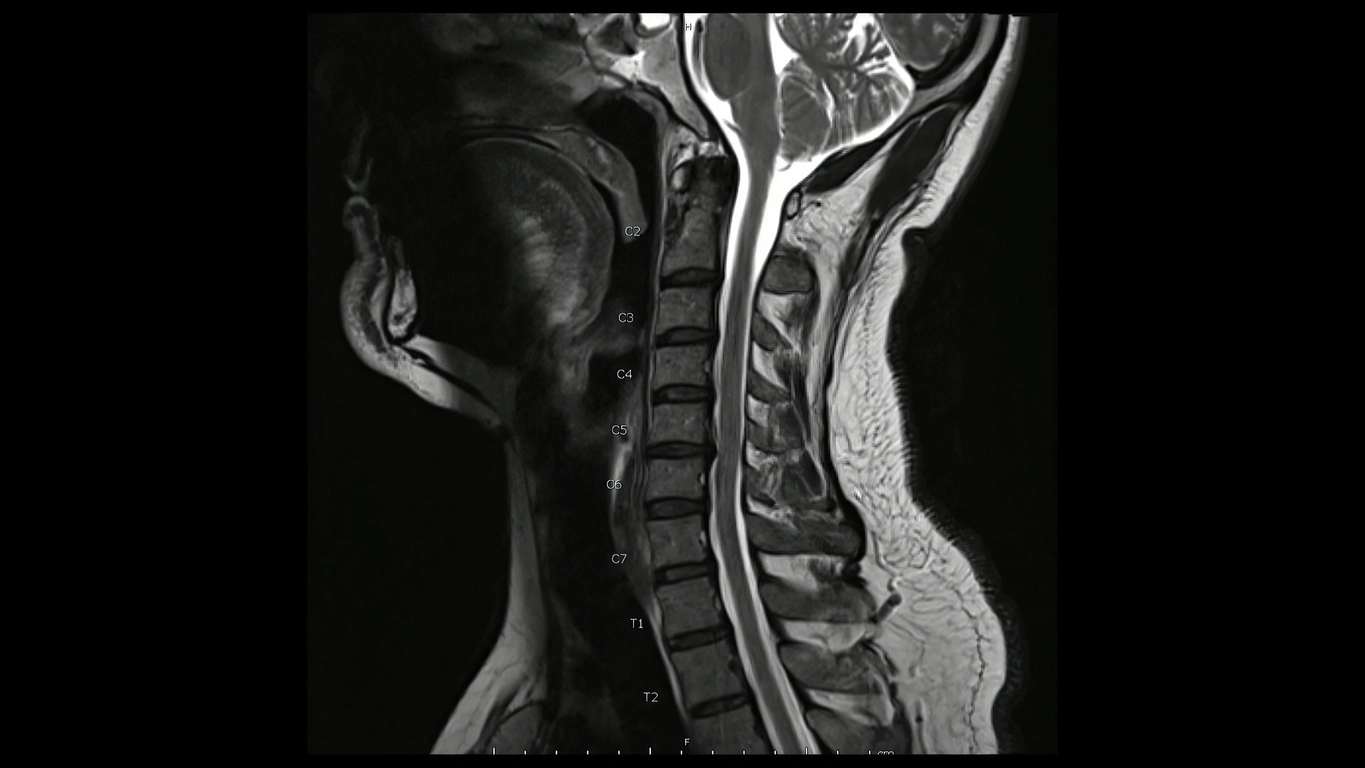A bulging disc in the C5-C6 area of your neck can disrupt your daily life in more ways than one. It can turn simple tasks like turning your head or reaching for an item into a painful ordeal. For many, the cycle of pain may seem never-ending. But there may be a light at the end of the tunnel. Consult your local chiropractor based in Anchorage. They can help!
So, if you’re tired of letting neck pain dictate your life, let your Anchorage bulging disc chiropractor guide you to a pain-free life. This might be your first step towards reclaiming your comfort, strength, and freedom from the clutches of a bulging C5-C6 disc.
Bulging Disc Explanation
A bulging disc, also known as disc protrusion, occurs when the outer fibrous ring of an intervertebral disc weakens, causing the inner core to protrude outward. This condition is not limited to a specific spine region and can occur anywhere from the cervical spine (neck area) to the lumbar spine (lower back).
However, we will mainly focus on the C5-C6 discs located in the cervical spine, which are frequently affected by this condition. The C5-C6 discs are situated between the neck region’s fifth and sixth cervical vertebrae. When these discs bulge, it can lead to uncomfortable and even debilitating symptoms. Understanding this condition and its implications forms the foundation for managing it effectively.
Understanding Bulging C5-C6 Disc Symptoms
A bulging disc in the C5-C6 region can result in various symptoms. Notably, these symptoms may differ from person to person, and some individuals might not experience any symptoms at all. However, the most common symptoms include:
1. Neck pain
The most prevalent symptom of a C5-C6 bulging disc is neck pain. This is due to the pressure exerted on the intervertebral disc, leading to inflammation and pain.
2. Shoulder pain
The C5-C6 vertebrae are located near the base of the neck, and bulging discs in this area often result in shoulder pain. This is particularly true if the bulging disc presses a nearby nerve.
3. Numbness and tingling
These sensations typically occur in the arms and hands. The C5-C6 nerve root supplies sensation and movement to different upper body parts. When this nerve root is compressed, it can result in numbness, tingling, or weakness in these areas.
4. Weakness in the arms and hands
As mentioned above, the C5-C6 nerve root controls the movement of the upper body. Therefore, a bulging disc causing nerve compression can weaken the arms and hands.
5. Limited range of motion
The increased disc pressure may limit the ability to move the neck freely, resulting in a reduced range of motion.
According to a study published in the European Spine Journal, these symptoms were prevalent in patients with a C5-C6 bulging disc. However, consulting a healthcare professional for an accurate diagnosis and treatment is crucial.
Common Diagnostic Techniques to Identify a Bulging Disc
Diagnosing a bulging C5-C6 disc usually begins with an in-depth physical exam and a review of the patient’s medical history. Physicians will ask about the nature and duration of the pain and any activities that may worsen the symptoms. Following this, various imaging tests such as X-rays, MRI scans, and CT scans become crucial in accurately diagnosing a bulging disc. While an X-ray can provide a clear image of the bones and rule out other conditions causing similar symptoms, it cannot visualize soft tissues like discs, necessitating MRI scans.
MRI scans provide a detailed image of both bones and soft tissues, allowing doctors to identify any disc abnormalities and measure the size of the bulge. A CT scan may be employed in some situations to get a more detailed 3D spine image. Further confirmation of the diagnosis can be achieved through nerve function tests if necessary. These combined methods ensure a precise diagnosis, essential for effective treatment planning.
Your Anchorage-based Chiropractor is trained to diagnose and treat bulging discs in the cervical spine, such as a C5-C6 bulging disc. They typically use a mix of physical examination and patient history to understand the symptoms.
Chiropractors may perform specific physical tests to assess range of motion, muscle strength, and nerve function. They may also utilize imaging studies such as X-rays or refer patients for an MRI to confirm the diagnosis. However, it’s crucial to note that while chiropractors can diagnose and provide conservative treatments, severe cases may necessitate a multi-disciplinary approach involving other specialists such as physical therapists or orthopedic surgeons.
Why Is the C5-C6 Disc the Common Site for Bulging?
The C5-C6 disc segment is one of the most vulnerable areas to disk degeneration and bulging, and the reasons for this susceptibility are twofold. Firstly, the cervical spine region experiences a lot of movement and bears significant weight. Secondly, the cervical spine’s disc spaces are smaller than other regions, which means that even minor disc protrusions can lead to significant nerve compression.
At the C5-C6 level, the cervical spine performs a substantial share of the neck’s total range of motion. This high mobility puts extra stress and strain on the intervertebral discs, increasing the risk of bulging or herniation over time.
Also, the vertebral arteries, which supply blood to the brain, run close to this segment. Any undue pressure or distortion from a bulging disc could potentially affect these arteries, leading to severe implications. Therefore, maintaining the health of the C5-C6 segment is crucial for spinal health and overall well-being.

Chiropractic Treatment Options in Anchorage for a Bulging C5-C6 Disc
Treatment for a bulging C5-C6 disc typically falls into two categories: natural treatments and surgical options. The choice between these often depends on the severity of the symptoms and how they impact a patient’s daily life.
Non-Surgical Chiropractic Treatment Options in Anchorage
Non-surgical treatments are often the first line of defense against a bulging disc and aim to alleviate pain, improve mobility, and enhance the quality of life without invasive procedures. These options include:
- Physical Therapy: A physical therapist can recommend exercises for C5-C6 to improve the strength and flexibility of the neck and shoulder muscles, which may help alleviate some of the pain and discomfort associated with a bulging disc.
- Pain Management: This typically involves using medications, such as nonsteroidal anti-inflammatory drugs (NSAIDs), muscle relaxants, or corticosteroid injections, to reduce inflammation and pain.
- Chiropractic Care: Chiropractors can provide hands-on spinal manipulation to improve physical function and reduce pain.
Surgical Treatment Options
Surgery is usually considered when non-surgical treatments prove ineffective or when the symptoms are severe or worsening. Surgical options include:
- Discectomy: This procedure involves removing the part of the disc that is bulging and pressing on the nerve.
- Spinal Fusion: In this procedure, the surgeon permanently connects two or more of the neck’s vertebrae so there is no movement between them.
- Artificial Disc Replacement: This is a newer procedure where the damaged disc is replaced with an artificial one.
Patients must discuss each treatment option’s potential benefits and risks with their healthcare provider to determine the best course of action for their specific condition.
Conclusion
As someone dealing with the discomfort of a bulging C5-C6 disc, you understand better than anyone the impact this condition can have on your everyday life. But it doesn’t have to be this way.
No one should have to live in pain. With the correct neck pain treatment for your needs, it’s possible to reduce or even eliminate the symptoms of a bulging C5-C6 disc. As healthcare professionals, our team of Anchorage chiropractors aim to help you live a healthier, pain-free life. So why wait another day?










